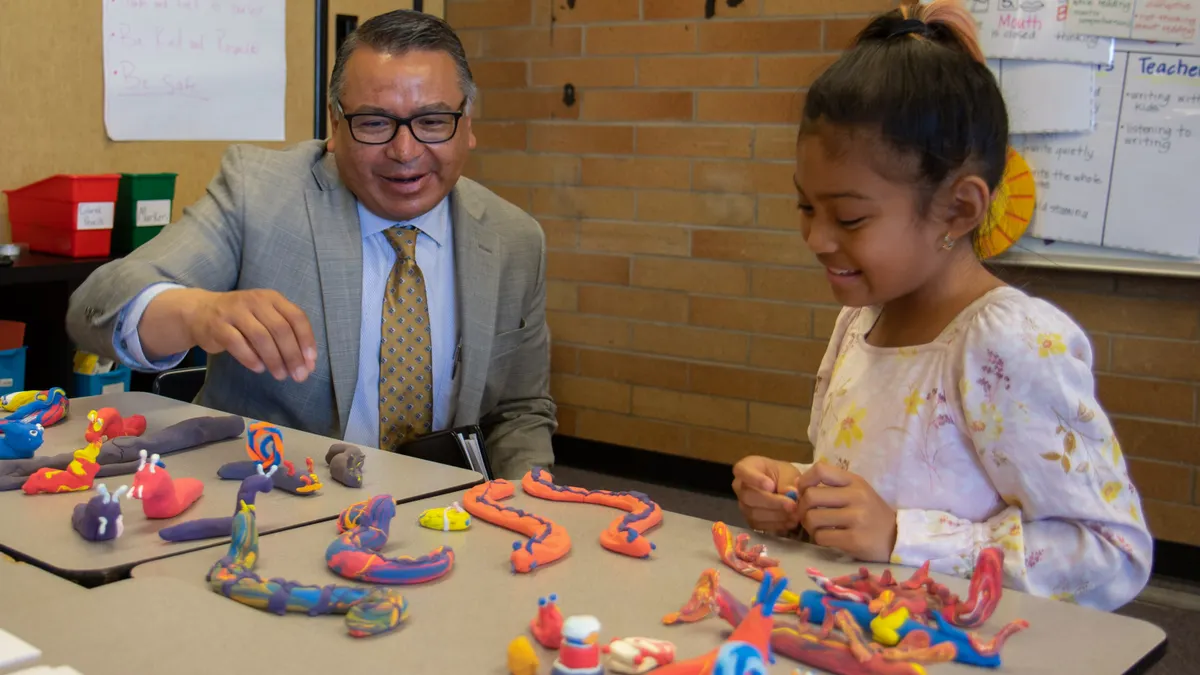Editor’s note: In light of an increase in school hate incidents since buildings have reopened, we’re republishing this article on best practices for addressing the issue on K-12 campuses.
Hate crimes have been on the rise nationally for three consecutive years, and schools have not been immune to spillover in the classroom.
The Federal Bureau of Investigation's most recent data, from 2017, indicates 7,175 criminal incidents in the U.S. that year were motivated by hate or bias toward a certain race, ethnicity, ancestry, religion, sexual orientation, disability, gender and/or gender identity. Out of these incidents, 10.5% took place on K-12 school or college grounds, making schools and colleges the third-most common location for hate crimes.
While the data doesn't differentiate between K-12 and college campuses, it does show 17% of hate crime perpetrators were minors, as were 12% of victims.
Immediately following the 2016 election, the Southern Poverty Law Center’s Teaching Tolerance project administered a survey for K-12 educators from across the country and found that out of over 10,000 respondents, 90% said that school climate had been negatively affected, and 80% expressed increased anxiety on the part of marginalized students. Four in 10 reported hearing derogatory language directed at students of color, Muslims, immigrants and based on their gender or sexual orientation.
Despite the statistics, about 40% of administrators reported at the time that they didn't have an action plan to respond to incidents of bias or hate.
"Hate and bias incidents are more common than anyone would think (based on news media)," said Maureen Costello, the director for Teaching Tolerance and a former educator. "Many administrators are not prepared to handle them." Racism, she said, is inherently incompatible with the "civic mission" of educators to prepare students for a diverse world.
But the trends continue.
Below are three pieces of advice from experts for administrators to consider when addressing and preventing these incidents on school grounds.
Address incidents immediately
In a more recent report, the same project found more than two-thirds of the 2,776 educators surveyed said they witnessed a hate or bias incident in their school during the fall of 2018. However, a majority of incidents witnessed by educators were not addressed by school leaders. No disciplinary action was taken a majority (57%) of the time, and nine times out of 10, administrators reportedly failed to denounce the bias or reaffirm school values.
Perhaps unsurprising to some, many schools are involved in lawsuits involving these matters.
Brian Schwartz, an education lawyer who has served as general counsel for the Illinois Principals Association for 20 years, said schools are at a greater risk of being found liable following a hate crime if they fail to follow state laws requiring education of students, fail to adequately address hate crimes brought to their attention, or perpetuate an atmosphere where hate crimes are not properly addressed.
But Schwartz said: "If school districts follow laws regarding education and seek to immediately address hate crimes that happen on school property, liability diminishes significantly." Keeping related documents, videos and other information relevant to the hate incident safeguarded can also be useful.
In response to the uptick in hate crimes, some states are increasing their scope and related penalties. A number of states also require staff training and have established educational programs to promote tolerance for students.
Implement clear policies and initiatives
Partnerships with civil rights organizations that provide K-12 education programs are being widely used. Approximately 1,700 schools have joined the Anti-Defamation League's No Place for Hate initiative over the past two decades, according to its website, and SPLC's Teaching Tolerance offers school resources that include lesson plans, professional development workshops and training. Grants are also available for schools to finance anti-bias initiatives.
Putting in place clear anti-bias policies for teachers and students can have a hand in building a culture of tolerance — something that experts say is crucial to preventing hate crimes.
"It’s all about the message and what leaders within the building convey to kids that they will tolerate," said Don Bridges, an SRO from Maryland's Baltimore County Public Schools, one of the districts nationwide that has witnessed an increase in hate crimes on school property.
"If you convey those messages appropriately, then you’ll see issues like that stop," Bridges says.
Break down silos between staff
While principals see the school from a "30,000-foot angle," SROs and counselors are "a vital part of the team" who deal with students on a daily basis, according to Mac Hardy, a director at the National Association of School Resource Officers (NASRO). Hiring staff who are familiar with the community climate, work well as team players with other staff and school administrators, and can keep their finger on the pulse of student attitudes goes a long way in terms of prevention.
But operating in silos or without any one of the cogs in the machine of a school may do the opposite.
"School cops and law enforcement are not going to keep schools safe. Administrators alone are not going to keep schools safe," Hardy said. "But if you have a team together — of counselors and law enforcement and parents and students and administrators — you have a chance."






 Dive Awards
Dive Awards













